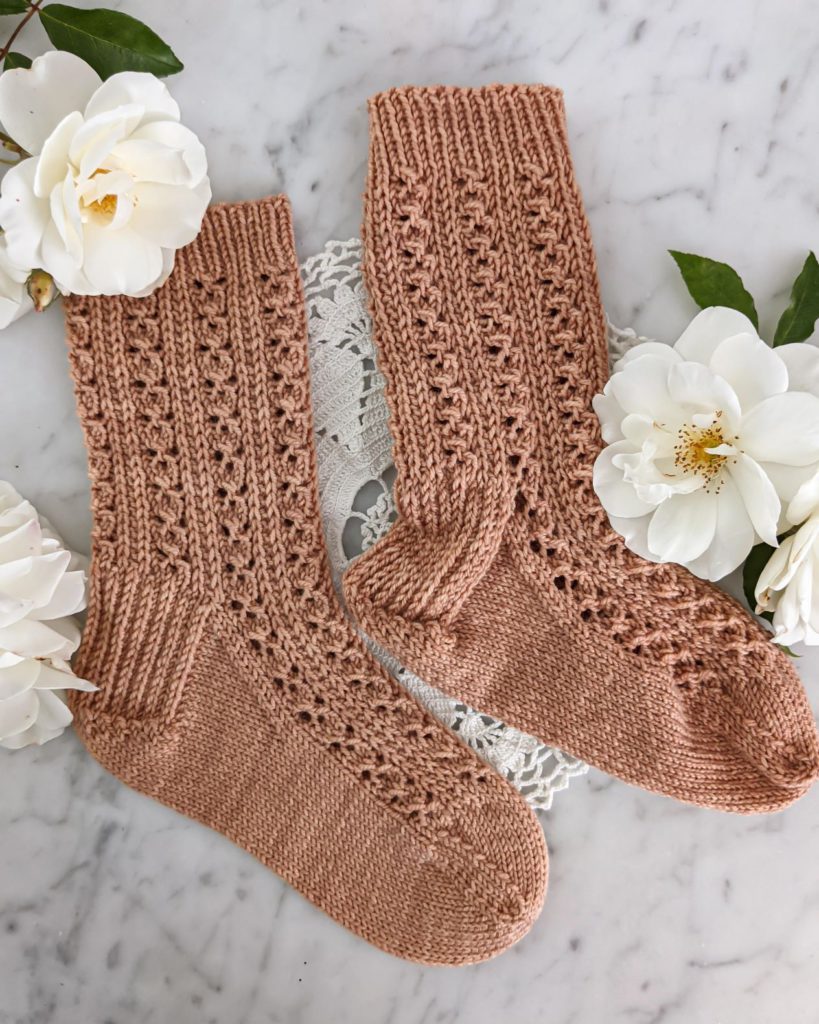
I can’t tell you how many times I’ve seen people say, “I don’t block my knit socks. The feet do that!”
Maybe this is just a misunderstanding of what blocking is. People see the fancy sock blockers in Instagram photos and think blocking is just stretching out a knit on a form.
But that’s the least important part of it.
Blocking is more about exposing your knitting to water in a controlled environment. It relaxes natural fibers, helps smooth out stitches, and gives your knits a more polished look. You don’t need a blocking form to do it.
Most of the time, I just soak my knits in lukewarm water (in the sink! in a bowl! wherever!), gently squeeze them out, roll them up in a towel to squeeze out even more water, and then lay them flat to dry. If you’re curious about the nitty gritty of blocking, Kate Atherley wrote a great overview of different blocking techniques over on the MDK blog.
And this short process pays off. Truly. Here are some of the most important reasons why I block my knit socks every single time.
Blocking Helps Relax the Stitches in My Socks
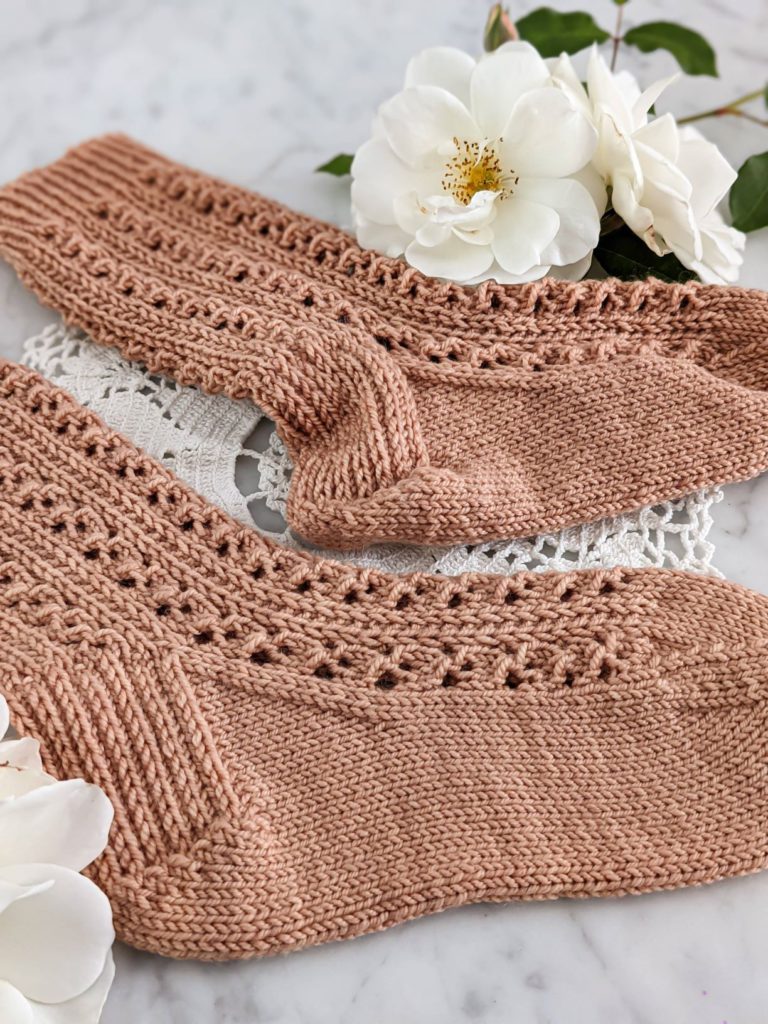
If you’ve knit one of my patterns, you might have noticed I tend to have a tight gauge. I yank and tug at my yarn while I’m working, and as a result, my knits can be a little lumpy when I’m done.
For example, take a look at the two socks on the left. One sock is blocked, and one sock isn’t blocked. Can you tell which is which?
Yep, the sock on the bottom is pretty obviously blocked, while the sock on the top is in its original state. You can see how the stitches on the bottom sock have relaxed all along the open lacework section and along the sole, too.
That’s because I gave them a good soaking. Just popping them onto your feet isn’t going to relax the natural fibers like that.
If you’ve got a sock with any sort of lacy pattern, blocking will be especially important to open out those stitches. Even if there isn’t any lace, though, blocking will help your stitches look more even and uniform.
Blocking Knit Socks Smooths Seams and Pickups
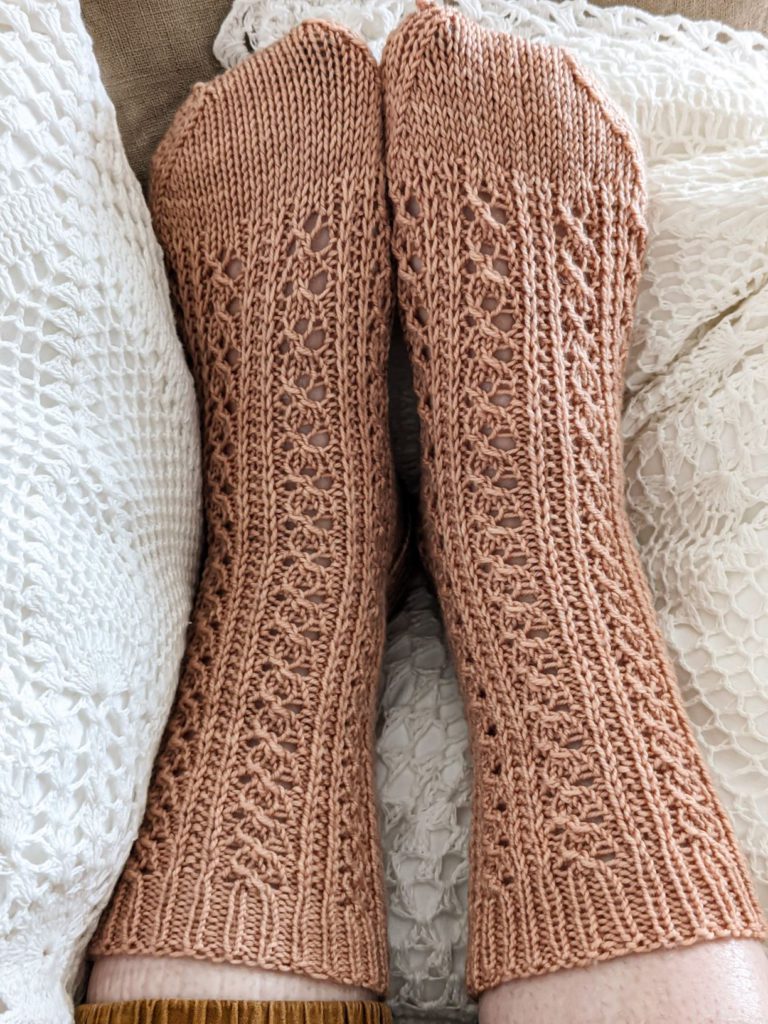
Okay, let’s say you don’t really care much about the stitch definition and just want to pop some socks on your feet. That’s legitimate, especially if you’ve just finished a pair of plain vanilla socks.
Take a look at the socks on the right, though. Can you tell which one is blocked and which isn’t? I can.
Look closely at the toes. The toe on the right has some puckering along the decreases and the grafting at the end. See those spots?
And if you see them, whoo boy, you can feel them, too. So many knitters make handknit socks specifically because they’re more comfortable and can be customized to fit any foot. This last step, which takes just a little bit of time, helps ensure even more comfort.
If I don’t block my socks, I can feel all those puckered stitches and seams. The ridge along the heel flap where I picked up stitches feels lumpy and doesn’t lay as flat. I want my socks to feel good against my feet, so I take a few extra minutes to block them once I’m done.
Blocking Helps Me Control How My Knit Socks React to the Washing Process
I try not to be too precious about my knits, but one thing I do spend a little mental energy on is figuring out how to wash them. If something is made from acrylic, cotton, or linen yarn, I tend to just throw it in the wash on cold and let it do its thing. Cotton and linen get air dryed flat, and acrylic goes right into the dryer.
But wool can be trickier, and all my socks have wool in them.
Superwash wool is theoretically machine-safe, but I have a confession: I’ve felted superwash wool socks before. Once burned, twice shy, so now I hand wash all my knit socks for at least the first time. YMMV.
When I block knit socks, it gives me a chance to see how they interact with water. I can see what the fibers do, whether the dye runs, and so on. I like having this measure of control so that I don’t end up ruining 20 hours’ worth of work.
Knitting is a personal process, and people should feel free to make the trade-offs that work for them. That’s more important than any of the considerations in this post. However! If you weren’t blocking your socks just because you didn’t see the point, and now this post is giving you something to consider, I hope you’ll give it a try. It’s really improved my sock-wearing experience.
Curious about which yarns would be best for this process? Be sure to check out my top 5 sock yarn recommendations.
Let’s stay connected!
Join my newsletter for 30% off all new releases, regular updates with helpful tips and tricks, first crack at registration for upcoming workshops, exclusive discounts, and more.
Prefer to read without ads? Join my Patreon, which starts at just $1 a month!
Join the A Bee In The Bonnet Facebook Group to participate in knitalongs and other fun community events
Come hang out with me on the A Bee In The Bonnet TikTok
Follow along on the A Bee In The Bonnet Instagram
Get inspired via the A Bee In The Bonnet Pinterest

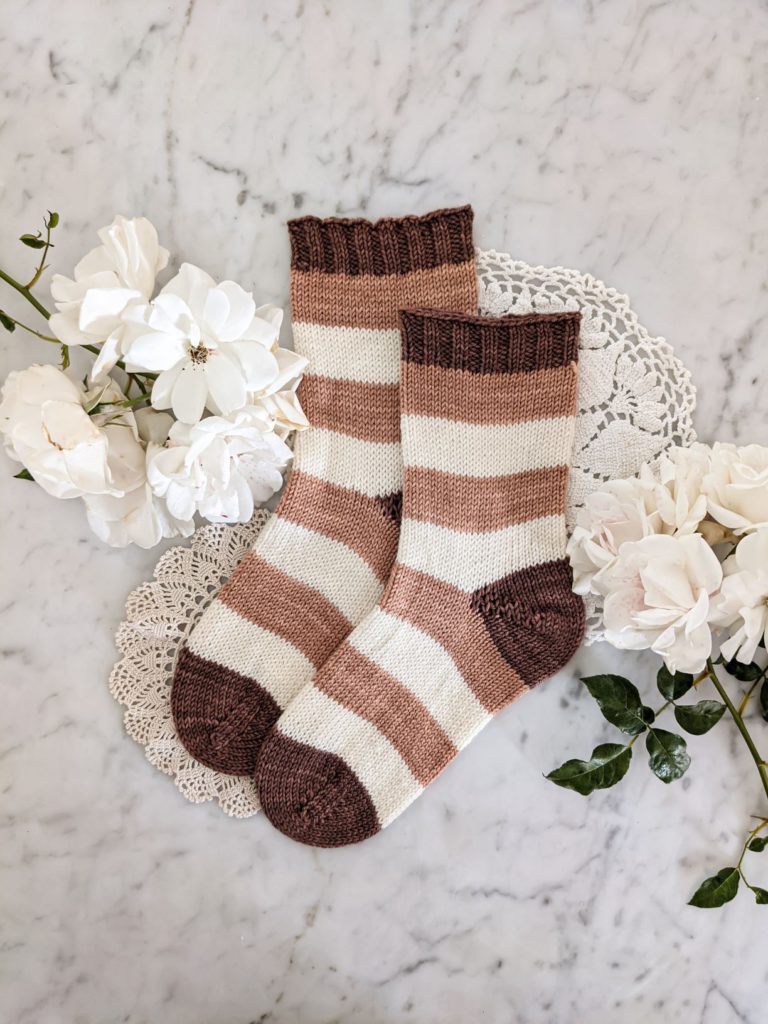
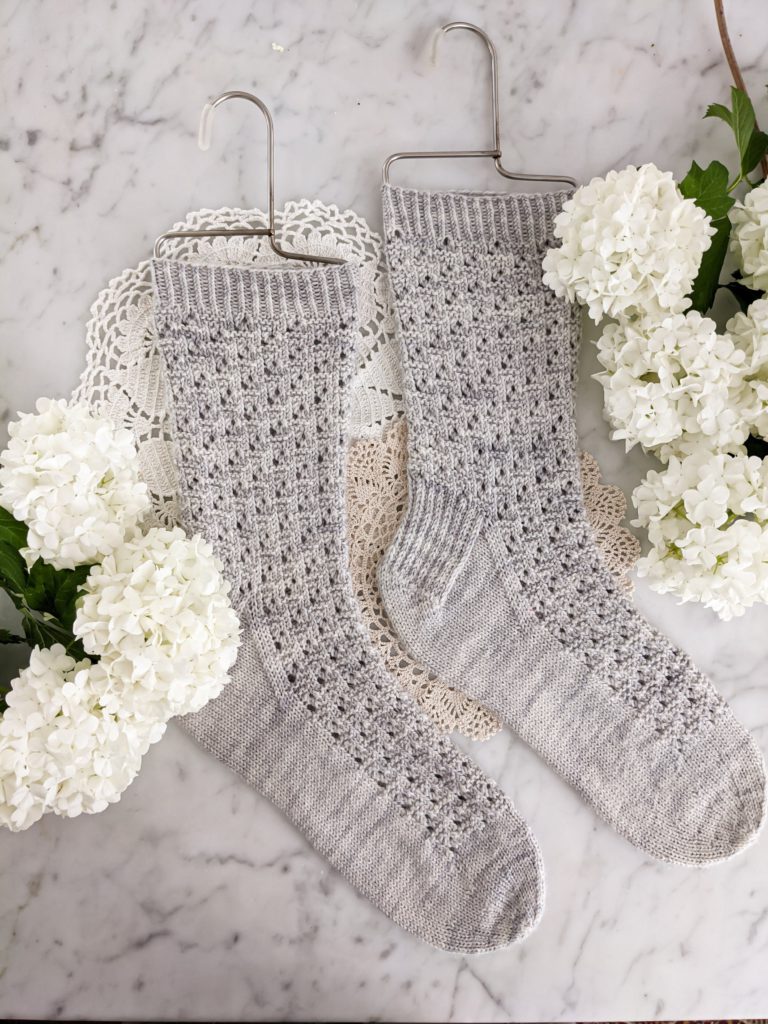
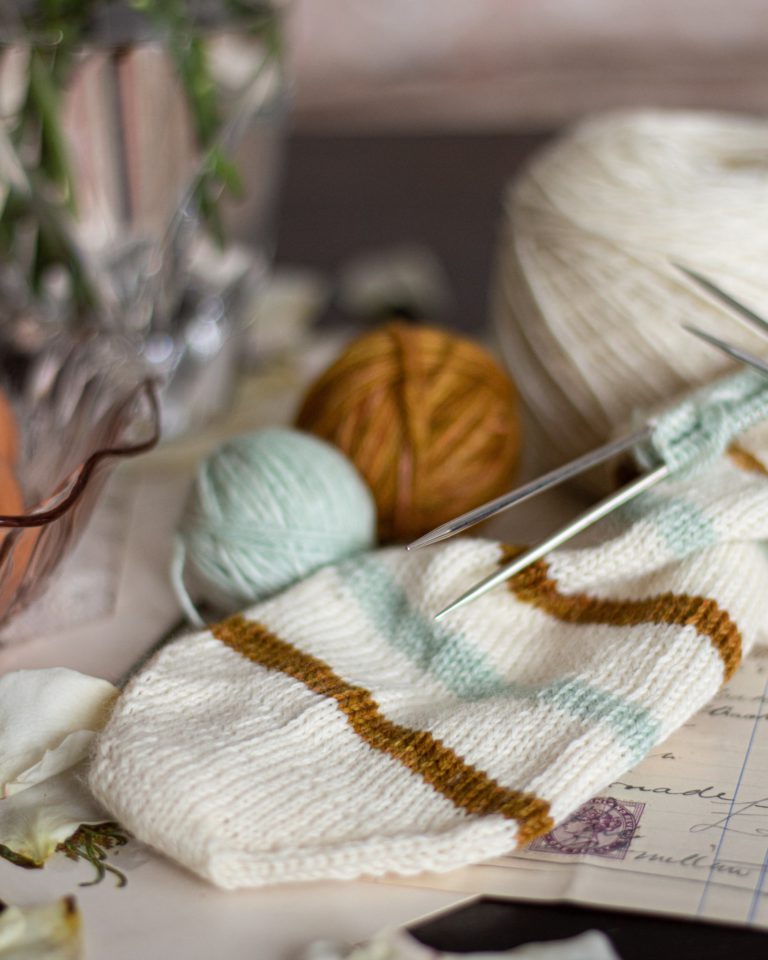
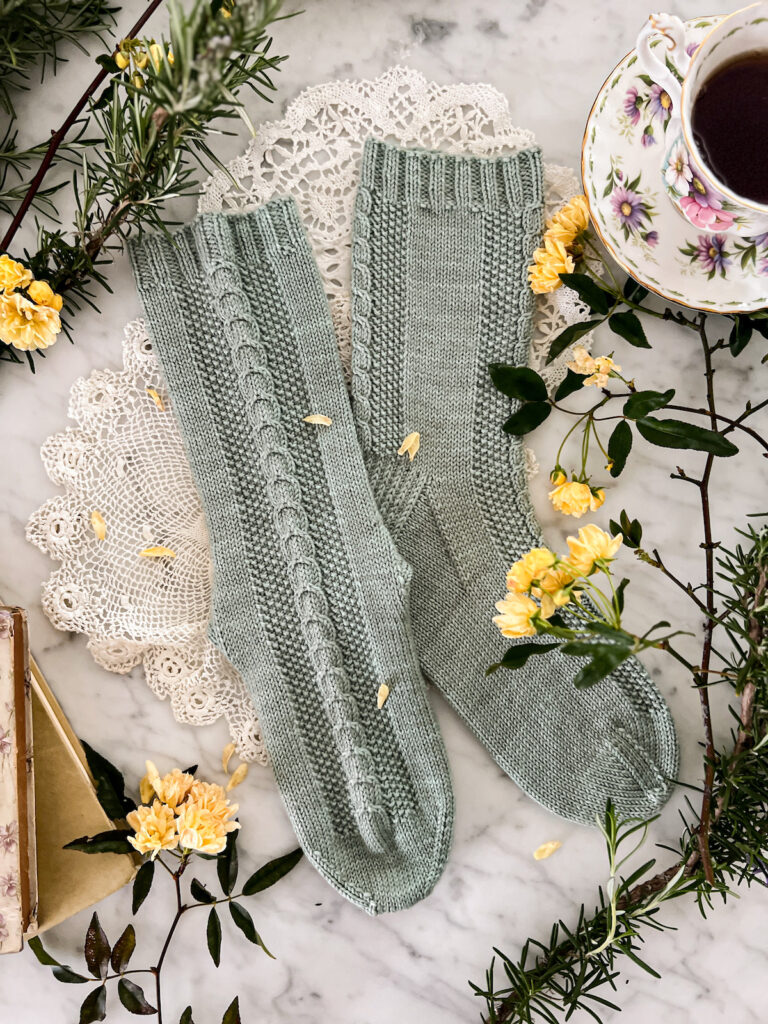
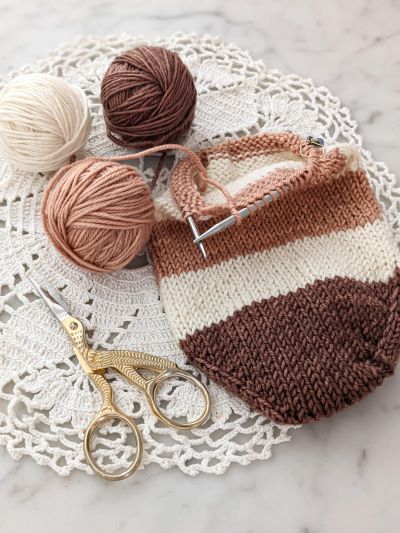
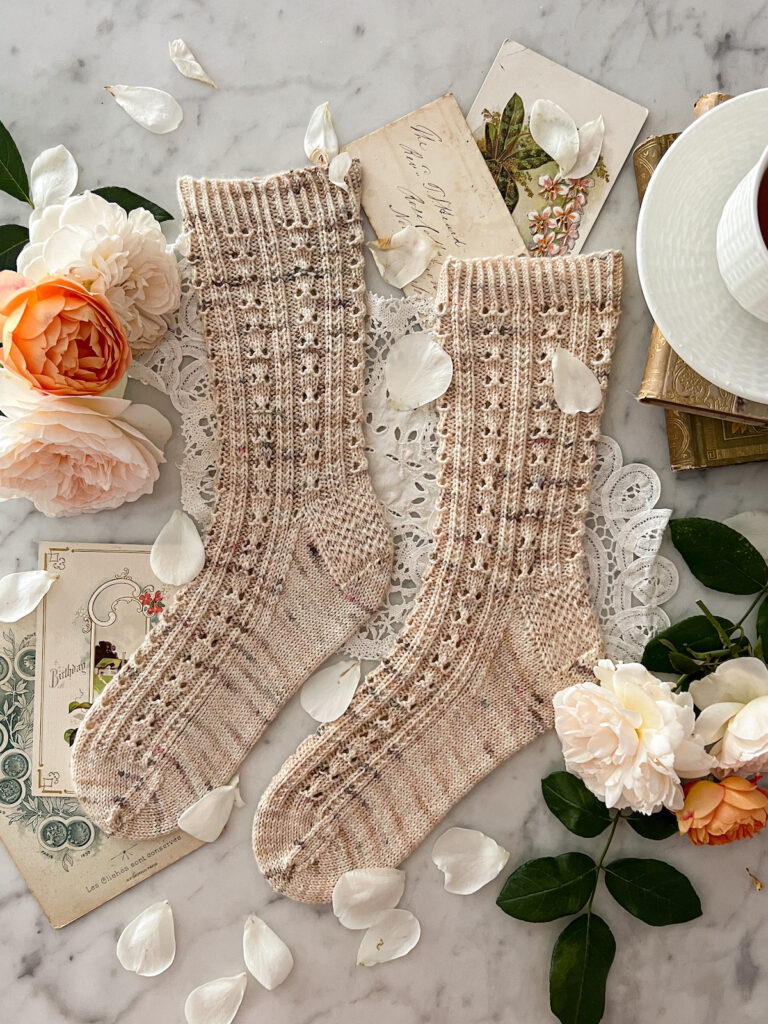
I usually block all my knitting It makes the stick look better, how can I find the stick you’re knitting the socks in the picture? It’s beautiful, I’d like to make it, thanks a lot
Hi there! I’m not sure what you mean by the stick. The pattern for these socks is the Bricolage Socks, which you can find in my shops on Etsy, Payhip, and Ravelry (you can find links to all my shops by clicking here). I hope that helps!
I’m not new to knitting but I am to knitting socks. I want to knit socks in the worst way but the heel instructions give me a headache. Help!
Some people find the heel flap and gusset a little confusing/overwhelming. Have you tried a sock with a peasant heel? That might be easier for you (it’s worked just like the toe, but in the spot where the heel is). My Macaron Socks (Ravelry link) use that heel construction!
Your knitted socks are beautiful
Thank you! That’s very kind. I appreciate it.